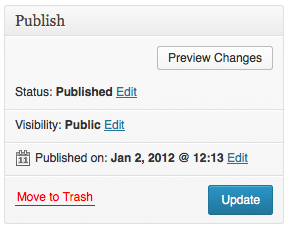Pages are static. They are a good way to publish information that doesn’t change much, like an About page.
In WordPress, you can write either posts or Pages. When you’re writing a regular blog entry, you write a post. Posts, in a default setup, appear in reverse chronological order on your blog’s home page. Pages are for content such as “About,” “Contact,” etc. Pages live outside of the normal blog chronology, and are often used to present timeless information about yourself or your site — information that is always applicable. You can use Pages to organize and manage any content.
There are two ways to create a new page.
At the top of your wordpress admin bar you will see a + New

Once the drop down menu appears, click on “Page” and you’ve created your page!
You can click Pages → Add New in your dashboard.

Or you can click on the name of your blog in the upper left corner of the admin bar and select New→ Page from the dropdown menu.

From there, you will need to determine a few things.
1) The title of the page
2) The content of the page
3) The template you want to use

4) Where this page should appear in your navigation. Is it a primary link or is it a link that should go under another one?
It is very easy in wordpress to change the menu navigation once you set it. For example, if you decide that your new page should be under a particular category and then later decide you want to make the page it’s own category, you can simple edit the “Attributes” of where you want that page to appear in your navigation.
After publishing a page, the module will look like this:

